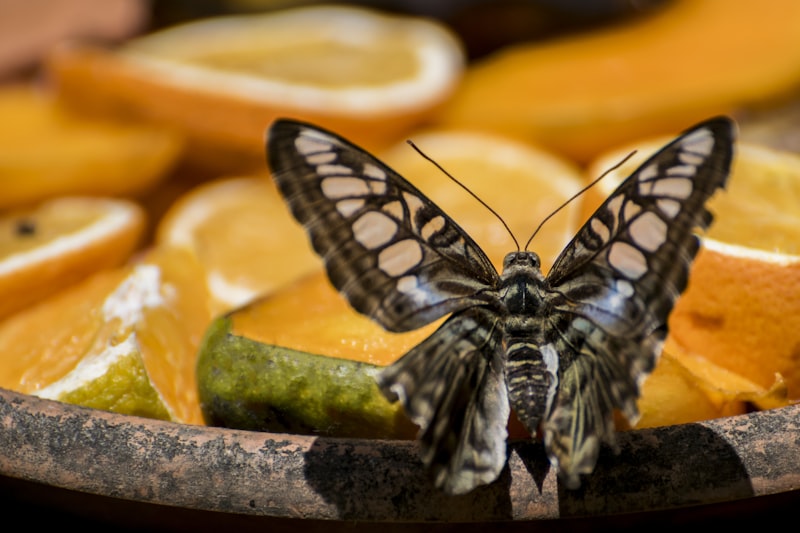Invertebrates, lacking a backbone but rich in diversity, from ants to corals, rely heavily on microbial partners to survive and flourish. These partnerships, known as symbiotic relationships, can be mutualistic, where both parties benefit; commensalistic, where one benefits without harming the other; or parasitic, where one benefits at the expense of the other.
One of the most famous examples of mutualistic symbiosis in invertebrates is found in termites. These wood-munching insects host a variety of microbes in their guts that help digest cellulose, a component of wood that is otherwise indigestible. In return, the microbes have a safe environment to live and access to a constant supply of nutrients.
Similarly, corals rely on symbiotic algae called zooxanthellae for their vibrant colors and energy. These algae live within the coral’s tissues, harnessing sunlight for photosynthesis and providing essential nutrients to the coral. In turn, the coral provides shelter and compounds needed for photosynthesis.
But it’s not just about digestion and energy. Some invertebrates, like certain species of ants, have evolved mutualistic relationships with bacteria that produce antibiotics. These antibiotics help protect the ants and their colonies from harmful pathogens, acting as a natural defense mechanism.
Unveiling Nature’s Partnerships: How Microbes Drive Symbiosis in Invertebrates
Have you ever wondered about the hidden alliances shaping the natural world? Delving into the intricate world of symbiosis reveals a fascinating partnership between microbes and invertebrates. These tiny organisms, often overlooked, play a pivotal role in maintaining the delicate balance of ecosystems.
Invertebrates, ranging from corals to insects, form alliances with various microbial communities that inhabit their bodies. This partnership isn’t just incidental; it’s a testament to nature’s intricate design. Microbes, such as bacteria and fungi, contribute essential functions that aid in digestion, protection against pathogens, and even nutrient cycling.
Take, for instance, the humble termite. Within its gut resides a community of microbes capable of breaking down tough cellulose from wood—a feat impossible for the termite alone. This symbiotic relationship allows termites to thrive on a diet that would otherwise be indigestible.
Similarly, coral reefs, vibrant ecosystems teeming with life, owe their resilience to a symbiotic bond with algae called zooxanthellae. These algae live within coral tissues, providing them with vital nutrients through photosynthesis while benefiting from a protected environment.
What makes these partnerships truly remarkable is their mutualistic nature—they benefit both parties involved. The invertebrates provide a habitat and resources for microbes, while the microbes enhance the invertebrates’ survival capabilities. It’s a win-win scenario sculpted by millions of years of evolution.
Understanding these partnerships not only sheds light on the complexity of ecosystems but also underscores the importance of conservation efforts. Disrupting these delicate balances can have far-reaching consequences for biodiversity and ecosystem stability.
The collaboration between microbes and invertebrates exemplifies nature’s ingenuity—a web of relationships where each participant plays a crucial role. As we continue to unravel these mysteries, one thing remains clear: symbiosis is not just a biological phenomenon; it’s a testament to the interconnectedness of all life on Earth.
This article aims to captivate readers by highlighting the marvels of nature’s partnerships, using engaging language and exploring the significance of symbiosis in the natural world.
The Hidden World Below: Exploring Microbial Symbiosis in Invertebrate Ecosystems
Invertebrates, those spineless wonders ranging from ants to earthworms, are not alone in their underground habitats. They coexist with a myriad of microbes in intricate partnerships. These microscopic allies are not just passive passengers; they actively contribute to the survival and health of their hosts. It’s like a bustling city underground, where each microbe has a job to do, from breaking down organic matter to protecting against pathogens.
Take the humble earthworm, for instance. Beneath the soil, it hosts a community of bacteria in its gut that aid in digesting organic material. These bacteria break down complex compounds into simpler forms that the earthworm can absorb, essentially acting as its digestive partners. Without these microbes, the earthworm’s ability to process nutrients would be severely impaired.
Ant colonies are another marvel of microbial symbiosis. The underground chambers they inhabit are not just homes but complex ecosystems teeming with bacteria and fungi. These microorganisms help ants break down food, defend against pathogens, and even cultivate gardens of fungus for food. It’s a symbiotic dance where each partner benefits from the other’s presence and activities.
Invertebrate ecosystems are like miniature worlds where every resident, big or small, has a role to play. Microbes in these environments aren’t just passive observers; they are active participants in the cycle of life and death, decomposition, and regeneration. They influence everything from nutrient cycling to disease resistance, making them indispensable players in the underground ecosystem.
Exploring microbial symbiosis in invertebrate ecosystems opens a window into the hidden complexities of life below the ground. It’s a reminder that even in the smallest corners of our world, partnerships thrive and ecosystems flourish. Next time you see an ant hill or dig in your garden, remember that beneath the surface lies a bustling community where microbes and invertebrates coexist in delicate harmony.
From Deep Oceans to Forest Floors: Where Microbial Symbiosis Thrives in Invertebrates
In the darkest depths of the oceans, where light barely penetrates, hydrothermal vents teem with life forms that defy conventional understanding. Here, tube worms and mollusks forge partnerships with chemosynthetic bacteria. These bacteria convert chemicals from the vents into energy, sustaining their hosts in a symbiotic embrace. It’s a testament to nature’s ability to innovate and adapt in the most extreme environments.
On land, amidst the leaf litter and soil, another drama unfolds. Tiny insects like ants and termites play host to microbes that aid in digestion or provide defense against pathogens. Ant colonies, for instance, harbor bacteria that break down complex substances into digestible nutrients, ensuring the colony’s survival. This mutualistic relationship highlights how even the smallest creatures rely on microscopic allies for their very existence.
The concept of microbial symbiosis extends beyond mere survival strategies; it underscores the interconnectedness of ecosystems. In coral reefs, for example, coral polyps house algae within their tissues. These algae harness sunlight to produce sugars through photosynthesis, which nourish the coral in return. This delicate balance not only supports the coral but also shapes the entire reef ecosystem, illustrating how symbiosis can drive biodiversity and resilience.
Invertebrates, often overlooked in favor of larger, more charismatic species, thus become heroes of a microbial narrative. They demonstrate that size is no barrier to significance in the grand tapestry of life. As scientists delve deeper into these partnerships, they uncover not just survival strategies but potential insights into medical, agricultural, and environmental challenges we face today.
From the abyssal plains to the forest understory, microbial symbiosis in invertebrates offers a profound lesson in cooperation and adaptation. It invites us to marvel at nature’s intricate solutions and consider our own relationships with the microbial world around us.
Survival Strategies: How Invertebrates Depend on Microbial Symbiosis for Adaptation
Survival in the natural world often hinges on unexpected partnerships. Invertebrates, those creatures without a backbone, exemplify this through their ingenious reliance on microbial symbiosis for adaptation. Imagine a world where tiny organisms wield tremendous power—this is the reality for many invertebrates.
From deep-sea vents to tropical rainforests, invertebrates have evolved alongside microbial partners, forming intricate relationships that ensure their survival. Take the bobtail squid, for instance. This small cephalopod harbors bioluminescent bacteria within specialized organs. During nighttime hunts, the squid uses this microbial light to camouflage against moonlight, evading predators with an otherworldly glow.
Meanwhile, in terrestrial ecosystems, ants navigate a world governed by chemical cues, thanks to mutualistic relationships with bacteria. These microscopic allies produce antimicrobial compounds, protecting ant colonies from harmful pathogens and preserving their food supplies.
Invertebrates also demonstrate resilience in extreme environments. The Pompeii worm, found near hydrothermal vents, thrives in scorching waters due to a unique partnership with sulfur-eating bacteria. These bacteria not only tolerate but also harness the volcanic heat, enabling the worm to endure temperatures that would scald most other life forms.
These examples underscore the crucial role of microbial symbiosis in invertebrate survival strategies. By forging alliances with bacteria, fungi, or other microorganisms, these creatures not only adapt but often thrive in environments deemed inhospitable to larger organisms. Through symbiosis, they access specialized functions—from bioluminescence to thermal tolerance—that elevate their chances of survival in a competitive natural world.
Understanding these partnerships offers insights into both biological diversity and potential applications in fields such as medicine and environmental conservation. Invertebrates, it seems, have much to teach us about the power of cooperation at the microscopic level.
Revolutionizing Science: New Discoveries in Microbial Symbiosis Among Invertebrates

Microbial symbiosis among invertebrates has sparked a revolution in scientific understanding, uncovering intricate relationships that redefine how we perceive these organisms. Unlike conventional views of invertebrates as solitary creatures, recent studies have illuminated profound partnerships they forge with microbes.
Take corals, for instance, which thrive in nutrient-poor waters thanks to symbiotic algae residing within their tissues. These algae not only provide corals with essential nutrients through photosynthesis but also contribute vivid colors to coral reefs. This mutualistic relationship highlights the delicate balance that sustains entire marine ecosystems.
In terrestrial realms, the humble earthworm serves as another compelling example. Long perceived as soil engineers, earthworms host diverse microbial communities in their guts that aid in digestion and nutrient cycling. These microbes enable earthworms to break down organic matter efficiently, enriching soil fertility in the process. Such findings underscore the critical role of microbial symbiosis in maintaining healthy soil ecosystems worldwide.
Furthermore, deep-sea hydrothermal vent communities offer a glimpse into extreme symbiotic relationships. Tube worms found in these harsh environments house chemosynthetic bacteria within specialized organs, which convert toxic hydrogen sulfide into organic carbon through chemosynthesis. This symbiosis supports entire ecosystems in the depths where sunlight cannot penetrate, challenging traditional notions of life’s limits on Earth.
As scientists delve deeper into these symbiotic associations, they uncover not only the ecological significance but also potential applications in biotechnology and medicine. From developing novel antibiotics inspired by symbiotic bacteria to enhancing agricultural practices through understanding soil microbial communities, the implications are vast and transformative.

The study of microbial symbiosis among invertebrates marks a paradigm shift in scientific exploration. It illuminates the intricate web of relationships that underpin ecological stability and offers promising avenues for innovation across diverse fields. As research advances, the profound impacts of these discoveries promise to reshape our understanding of life on Earth and beyond.
Frequently Asked Questions
How does microbial symbiosis impact invertebrate evolution?
Learn how microbial symbiosis influences the evolutionary pathways of invertebrates, shaping their development, physiology, and ecological roles.
How do invertebrates benefit from microbial symbiosis?
Learn how invertebrates leverage microbial symbiosis to enhance digestion, immunity, and environmental adaptation.
Can microbial symbiosis be harmful to invertebrates?
Microbial symbiosis can sometimes harm invertebrates by causing diseases or altering their normal functions. This FAQ addresses the potential negative impacts of microbial partnerships on invertebrate health.
What is microbial symbiosis in invertebrates?
Microbial symbiosis in invertebrates refers to mutually beneficial relationships between invertebrate organisms and microorganisms. These partnerships can provide essential nutrients, aid in digestion, enhance immune responses, or even confer protection against pathogens. Understanding microbial symbiosis helps in exploring how invertebrates thrive in diverse environments and adapt to ecological challenges.
Examples of microbial partnerships in invertebrates?
Explore examples of microbial partnerships in invertebrates, highlighting symbiotic relationships that benefit both organisms. Learn about mutualistic interactions like those found in gut microbiomes aiding digestion or pathogen defense in insects.


